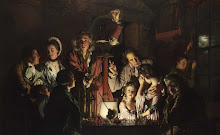Art Analysis - Cafe Terrace at Night by Vincent Van Gogh
Café Terrace at Night by Vincent Van Gogh
"Café Terrace at Night" is an oil on canvas painting created by Vincent van Gogh in 1888 during his stay in Arles, France. Van Gogh, renowned for his landscapes and self-portraits, painted this evocative night scene that captures the warmth and vibrancy of a café under the stars. I'd like to delve deeper and share my thoughts on this particular masterpiece, crafted by one of the most influential artists of his era. When most people think of Van Gogh, the first painting that comes to mind is "The Starry Night." This iconic piece is ubiquitous and instantly recognizable. Many can identify it as a Van Gogh just by its distinctive style, even without a visible signature. But how can we be so sure? We'll explore this in more detail shortly. These initial thoughts, glances, and questions mark the beginning of our journey into art analysis. My goal is for everyone reading this blog to understand my approach to analyzing a painting.
One of the first things I like to determine is the art style. Just by looking at "Café Terrace at Night," I would classify it as post-impressionism. Unlike typical impressionism, which features small, light strokes, this painting showcases larger, thicker brushstrokes. It also exhibits great contrast between opposing colors, such as the well-lit area of the café at night versus the rest of the town. The most telling feature is the abstract depiction of the people at the café. Impressionism is based on how the painter perceives the world, and Van Gogh's lack of focus on the people is evident in their blob-like forms, suggesting figures rather than detailing them.
The next aspect I examine is the elements present in the artwork. In "Café Terrace at Night," three key elements stand out: lines, color, and contrast. Understanding these elements helps to determine the time period in which the piece was created, the methods used, and, by noting the dates, reveals similarities with the works of other artists from the same era.
The thick brushstrokes in "Café Terrace at Night" are a prominent feature. These lines, though thick, appear purposeful. The curved lines at the bottom of the painting depict the cobblestone road, while the straight lines help construct the buildings, doorways, and overhangs of the café.
For a scene meant to depict the night, "Café Terrace at Night" is remarkably colorful. Interestingly, Van Gogh didn't use any black in the painting. Instead, he employed various shades of blue that give the illusion of darkness. Brighter colors like orange and yellow convey the light emanating from the lantern. Notice how the building is painted green, with the light above illuminating the ceiling and uppermost portions of the structure.
As mentioned earlier, contrast is a key feature in post-impressionist artwork. In "Café Terrace at Night," the bright, well-lit café draws immediate attention, inviting the viewer into the scene. The use of orange and yellow against the blue night sky is a striking example of contrasting colors. While the streets are dark and not well lit, the light from the windows of nearby homes adds a warm, inviting touch, suggesting the presence of people relaxing inside.
Cool fun fact: Van Gogh did not sign his paintings unless he felt they were good enough to be sold or traded. Next time you see a piece of his artwork, look for his signature. If it isn't there, it means he didn't think it was up to his standards. Keep this in mind when you create something. It may not meet your personal standards, and you might not like it, but others might appreciate it.
Anderson, J. and Anderson, J. (2023) Van Gogh’s cafe terrace: Bright yellows & deep blues: 1-st art gallery, 1st handmade portraits and reproductions. Available at: https://www.1st-art-gallery.com/article/vincent-van-goghs-cafe-terrace-at-night/#:~:text=Vincent%20van%20Gogh’s%20%22Cafe%20Terrace%20at%20Night%22%20is%20a%20masterpiece,artist’s%20psyche%20and%20our%20own. (Accessed: 07 June 2024).
Van Gogh signatures and handwriting Forensic Examinations (no date) Signature examinations and match. Available at: https://www.vangoghexperts.com/van-gogh-signature.html (Accessed: 07 June 2024).




I don't think I've seen this painting by Van Gogh before! It's truly a stunning piece of work, and you did a lovely job describing the key elements in this piece. I agree that the colors play a huge role in contributing to the environment and story of the painting. I would have never guessed the house was green! I didn't see that until you mentioned it. I also enjoyed your fun fact. I think his decision to only sign what he was proud of showed some sign of self doubt that not everything he made was good enough. I think if the piece is finished it's something to be proud of, even if all you accomplished was an end goal
ReplyDelete